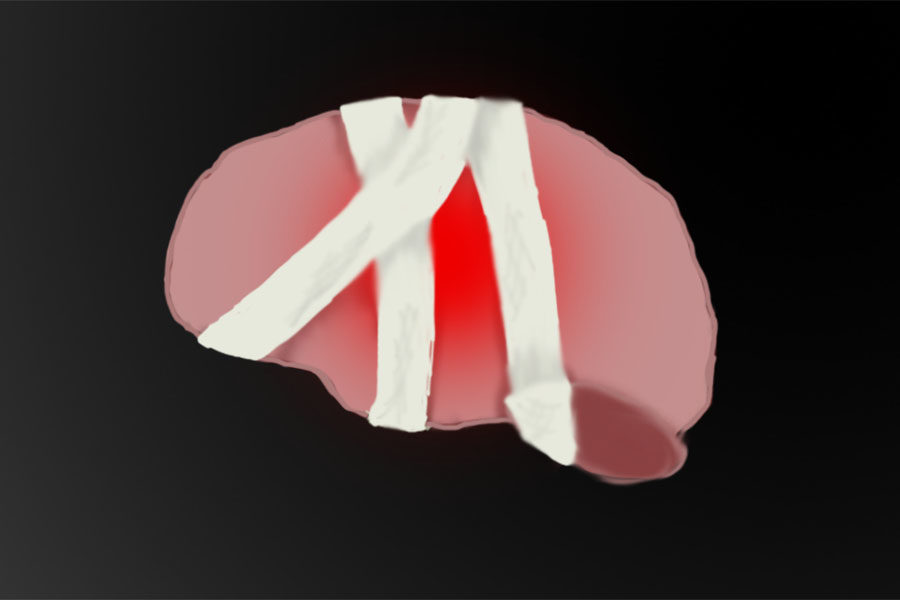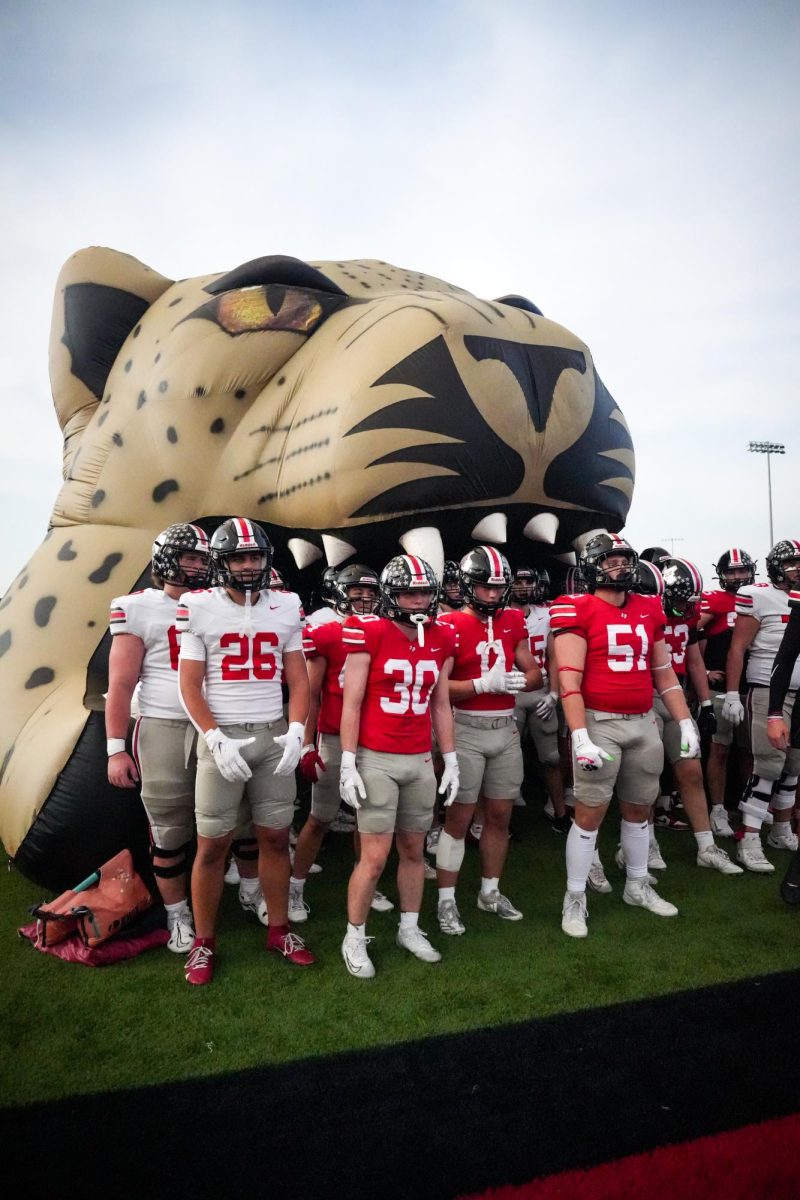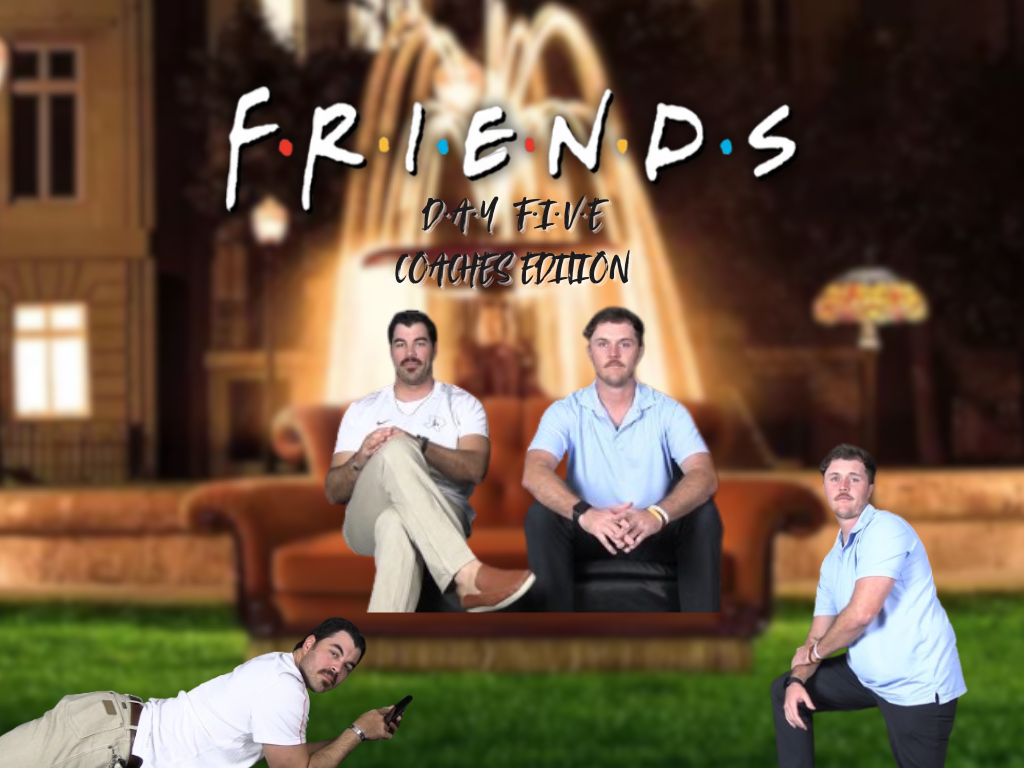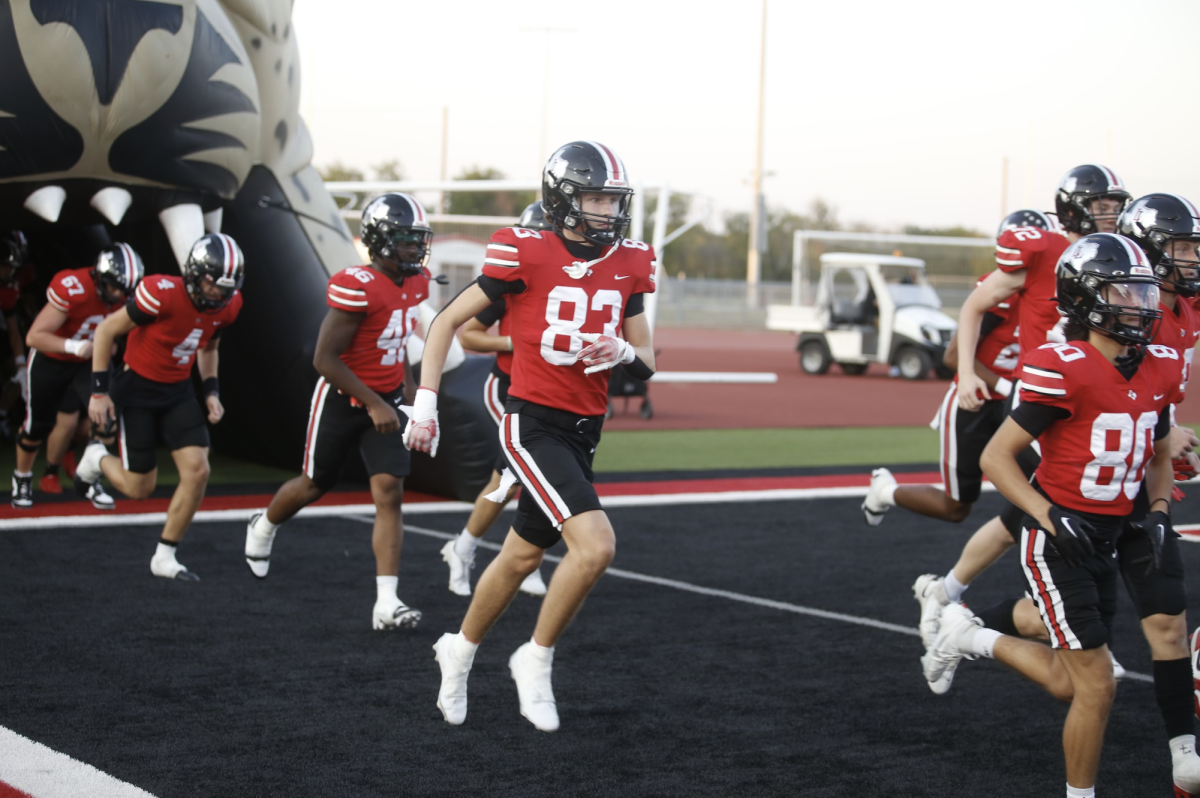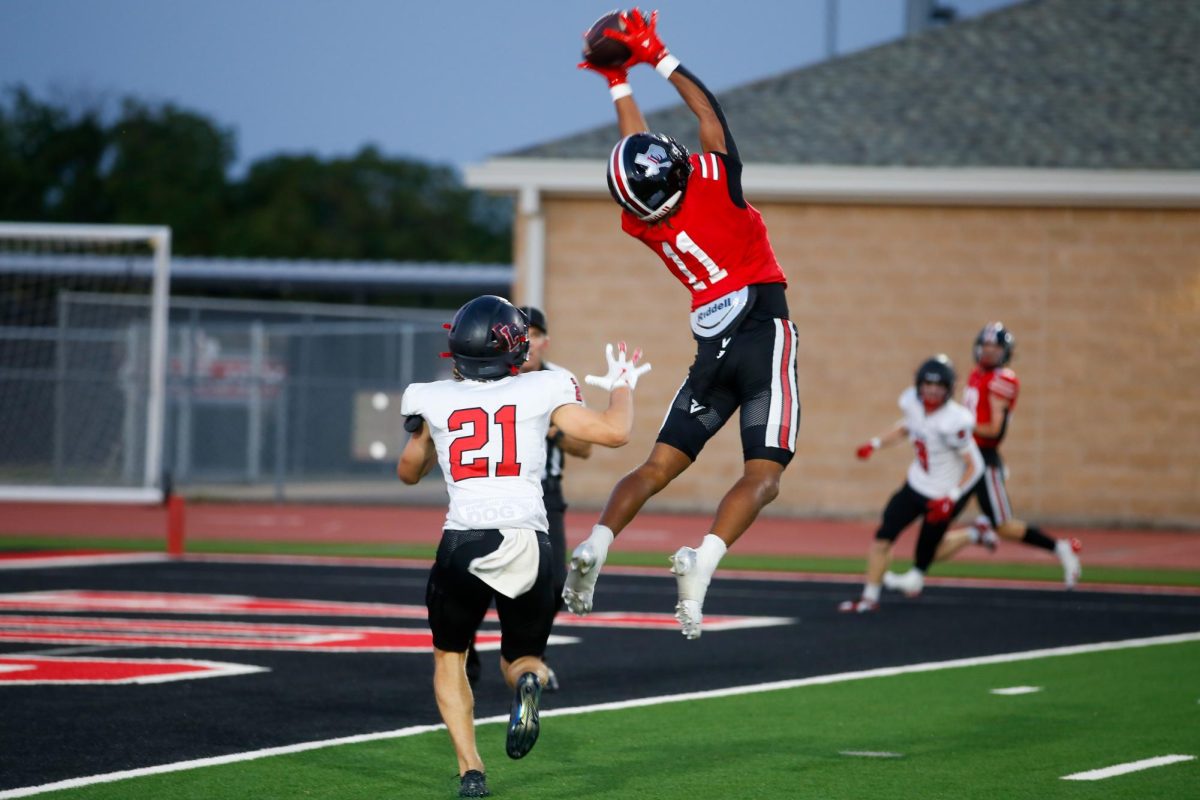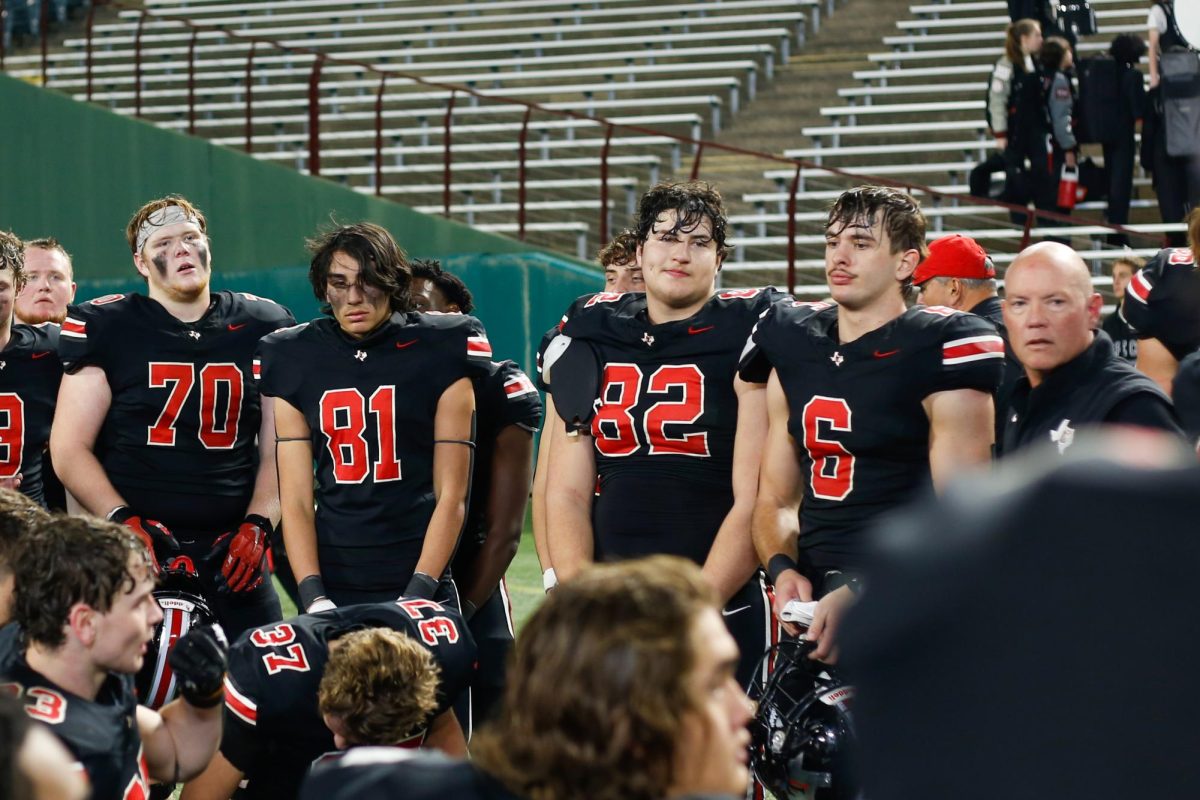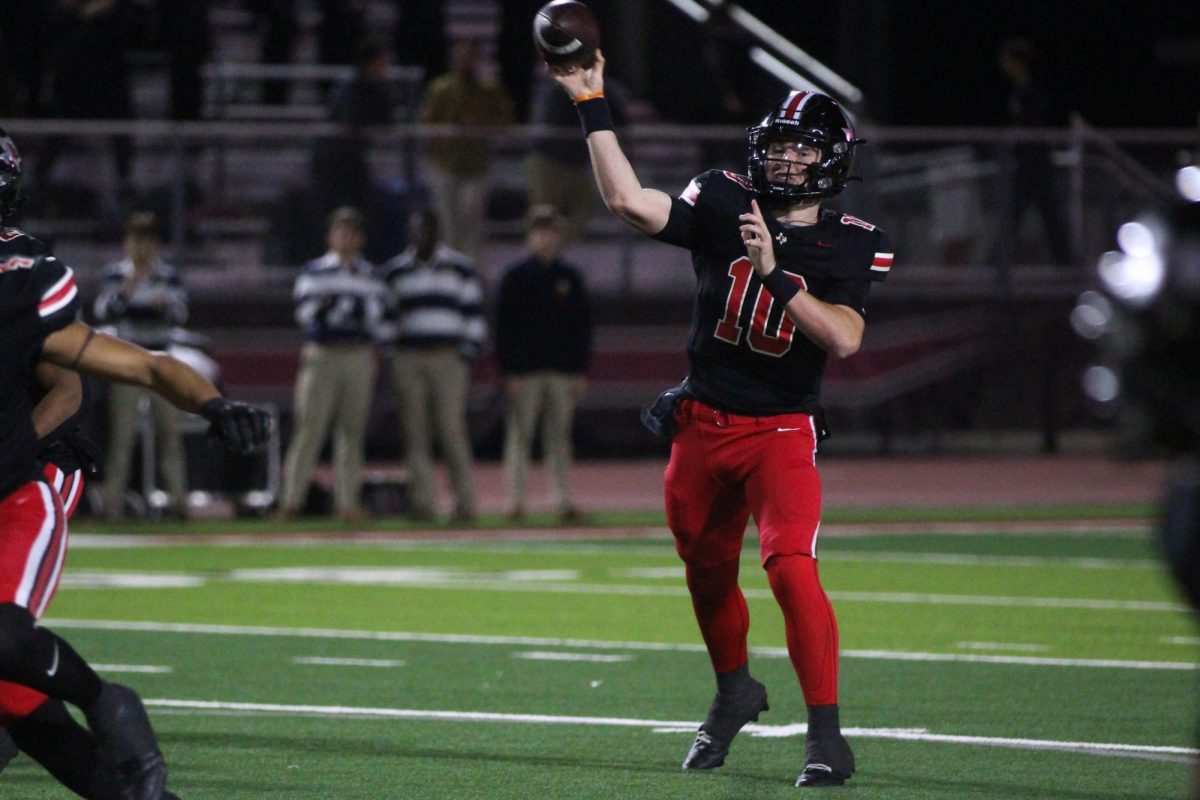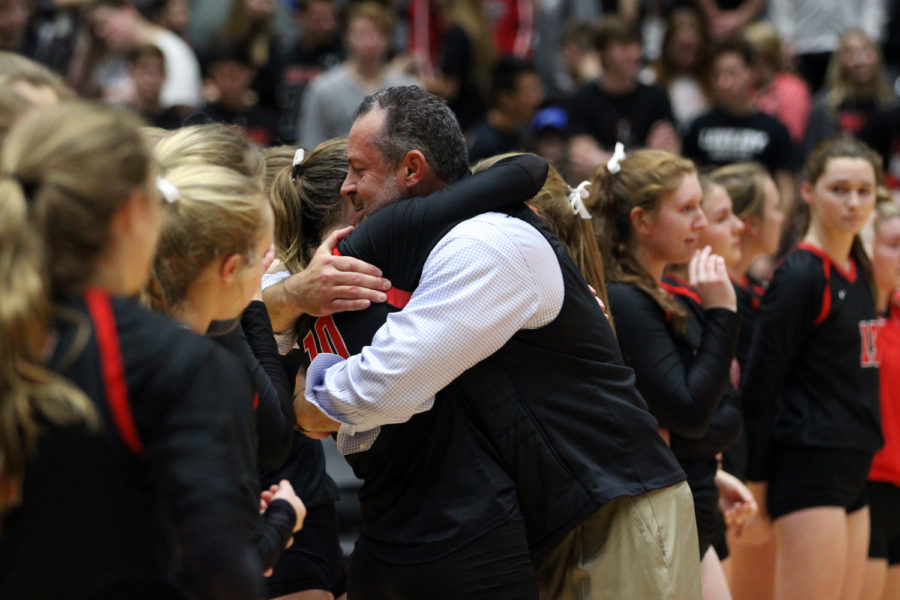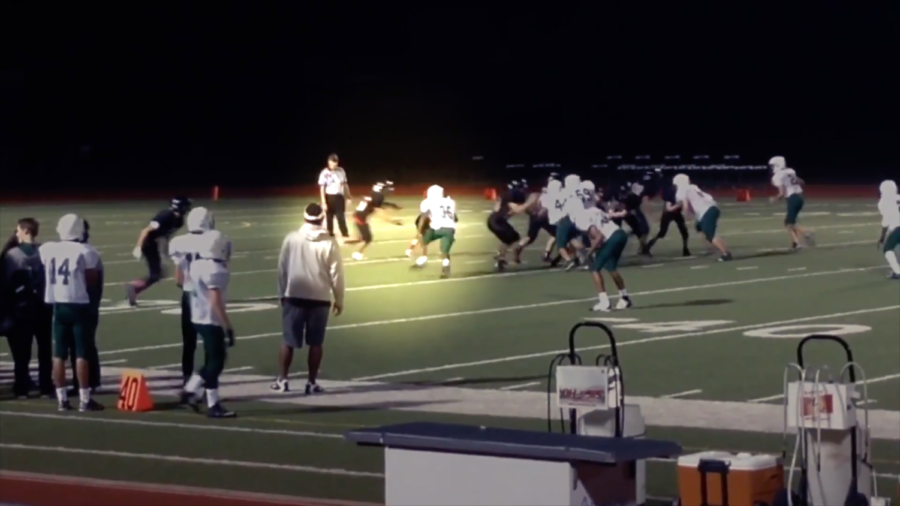It was a Tuesday morning, practice as usual, as the color guard warmed up to start rehearsing their halftime routine.
It was all normal.
Elizabeth Hannah, senior and a member of the team, spun her flag.
It was all normal.
The warm-up procedure was the same as every day.
It was all normal.
But then one wrong spin of the flag and the rest was a blur, mostly.
“I do color guard and we work with rifles and flags,” Elizabeth said. “I actually hit my head twice. The first time it was with a flag. So after that I felt kind of dizzy, but I wasn’t feeling the effects of the concussion yet. So then I couldn’t see because I scrapped out my contact.”
But since this injury was in the middle of practice, Elizabeth decided to keep going.
“So then we were working with rifles,” Elizabeth said. “I was already dizzy but I just wasn’t feeling it yet. So then I just knocked the other side of my head with my rifle.”
All sports can lead to an athlete’s risk of a concussion.
“I got my concussion while playing football,” senior and varsity football player CJ Vogel said. “My head was sandwiched between another helmet and the ground during a play.”
Even the ones cheering on the sidelines have a risk.
“I got my concussion in the courtyard when my stunt group was warming up basket tosses on the grass,” cheerleader and sophomore Mona Habibi said. “I was the backspot. As we were going up Abby [Eaton] fell backwards, hit my head, and then we both fell to the ground. There was one coach around because that is UIL rule but I’m not sure if she was paying attention or not. Then I got up and I didn’t remember the last five seconds of my life. I asked my stunt group what just happened and they told me I needed to go to the nurse.”
DIAGNOSIS AND TREATMENT
Each athlete’s experience with a concussion is different, trainer Susan Smiley said.
“We do not rate concussions on a scale, because each athlete’s experience is unique and the recovery varies,” Smiley said. “We do not have a specific test for concussions. We have several different methods we use to diagnose a concussion.
Medical history is a huge part of the process of diagnosing a concussion.
“Did the athlete get hit in the head?” Smiley said via email. “What symptoms did they have (headache, nausea, vomiting, dizzy, foggy, sensitivity to light or noise, ringing in the ears, balance difficulty, emotional, sleep disturbances, etc)? How long did they last? We can check for pupil reaction and eye tracking (nystagmus). We can also use the ImPACT test to check for cognitive function.”
Elizabeth’s mom, Paige Hannah, explained the process she went through with her daughter in identifying the concussion, which is similar to the precautions most people take.
“Severity of a brain injury is not something so readily measured,” Paige said. “Based on the potential of severity of the nature of Elizabeth’s injury, we opted at the ER to not have her head scanned because of the higher risk of exposure to radiation to her brain and thyroid. We were given symptoms to watch for should she be bleeding internally, and, thankfully, those never appeared.”
Next the Hannahs visited a sports injury doctor to gain more information regarding the ImPACT test that Elizabeth had taken the fall before.
“Compared to those results and the one she took shortly after her injury, there were remarkable differences between the baseline test and the recent test meaning her brain had sustained injury,” Paige said.
BAN FOOTBALL?
Two doctors in Minnesota recently banded together and proposed to get rid of football in public high schools. Dr. Steven Miles, professor of medicine and bioethics at the University of Minnesota medical school in Minneapolis is one of the doctors suggesting the removal of the sport.
“The reason is young people are required to be in school,” Miles said in a phone interview. “That generates a special kind of peer pressure that works on the choice to play football, for example. Consider a small town in Texas, that town may only have three kids that are big enough to be linebackers and so they would be tremendous pressure to fill the team and to have them play football. That operates on their choice, and they might not even want to play football.”
In high school football, athletes experience about 650 head hits a season, Miles said, add that football, by nature, is “a game of collision.”
“Not all of these cause the symptoms of concussions, but it’s not clear that you need to symptoms in order to have the brain damage,” Miles said. “Some people get the brain damage without having any symptoms and then eventually after they have enough brain damage then they get the permanent disabilities.”
Brain injuries can not only ruin a person’s high school career, but the rest of their life, Miles added.
“Let suppose a student is on the volleyball team and they tear a ligament in their knee,” Miles said. “They could go on and be a doctor, lawyer, school teacher, journalist, or absolutely anything with a torn knee that was repaired. But once your brain is damaged, you are out from all of it.”
A DIFFICULT CHOICE
Some students, like freshman Ashlyn May, have been forced to give up what they love to do in order to keep themselves safe. May had to stop playing volleyball after a concussion and is still “under protocol” 13 months later.
“I think brain injuries are incredibly serious and I didn’t take it that way,” May said. “I absolutely hate when people are like ‘Oh yeah, I have probably gotten so many concussions.’ I don’t think they understand the true dangers. You can get a concussion from something as simple as whiplash or a hard hit to the shoulder. I wish people understood the dangers that come with it. One of the reasons I had to quit volleyball was that if I got hit again, it could have been permanent brain damage.”
But Vogel noted that when people sign up for a sport or activity, they likely know the risks of injuries they can possibly receive.
“Playing football, you know that the risk of a concussion is there,” Vogel said. “But the reward of playing football is far greater than the risk of concussions, in my opinion. I know others disagree, but I don’t care.”
Parents are also aware of these risks, but they make the decision to allow their kids to proceed with the activity.
“I think you have to weigh the pros and cons of playing team sport,” CJ’s mom, Lisa Vogel, said. “Yes, there is always risk of injury, but the benefits of discipline, teamwork, and leading a healthy lifestyle can outweigh that risk.”



